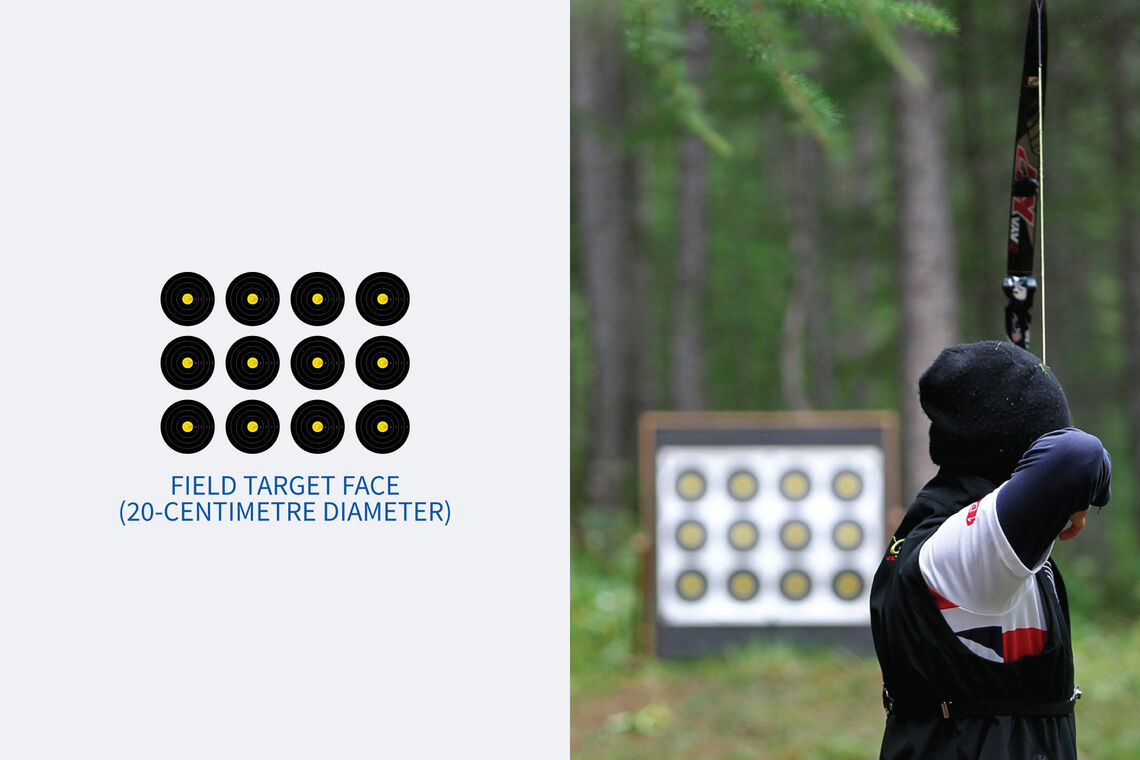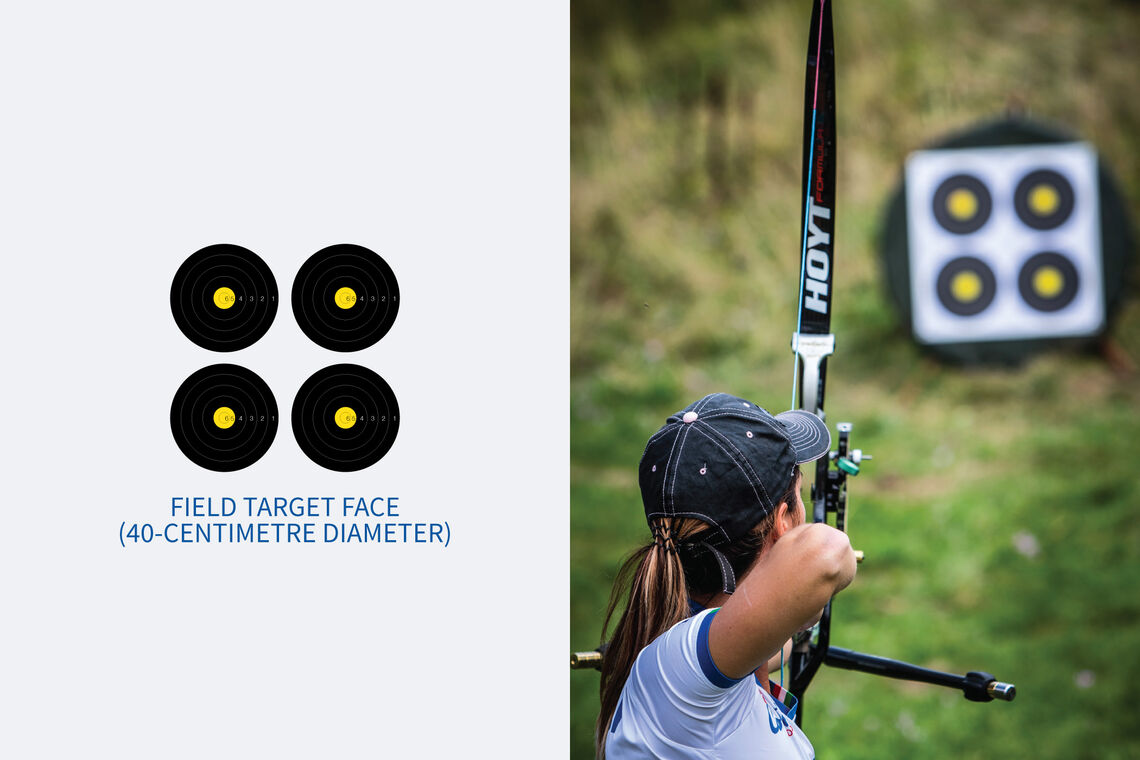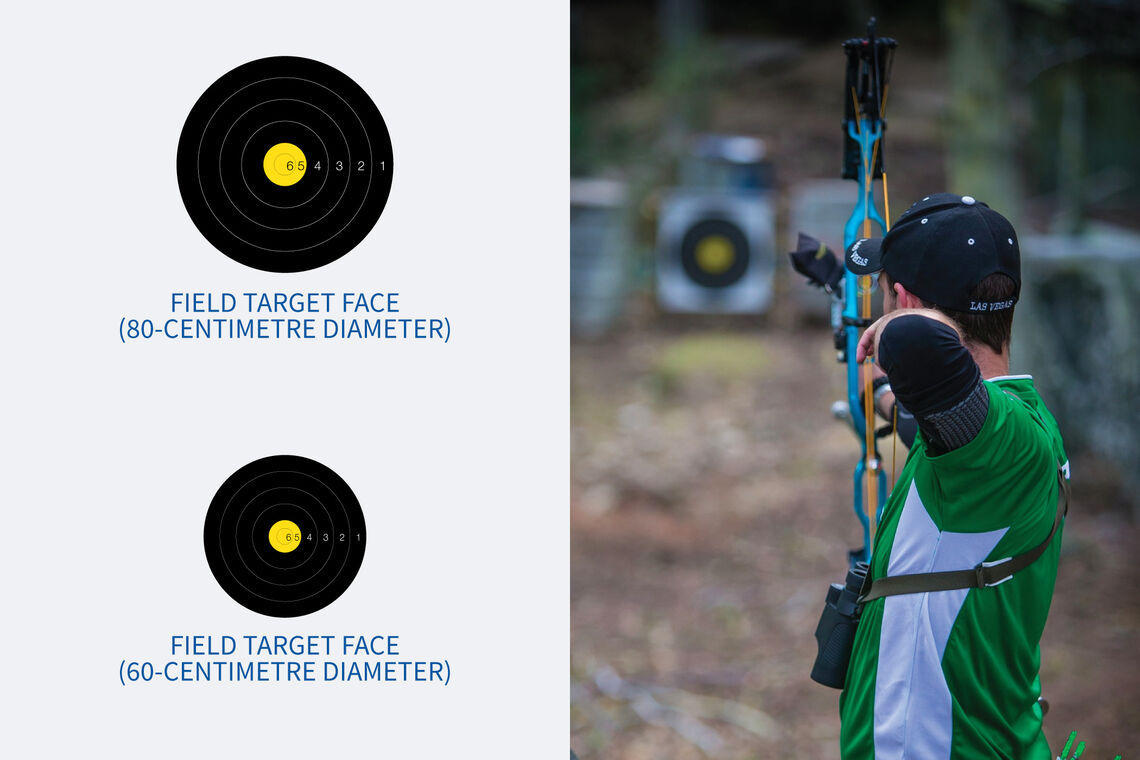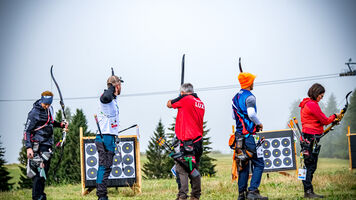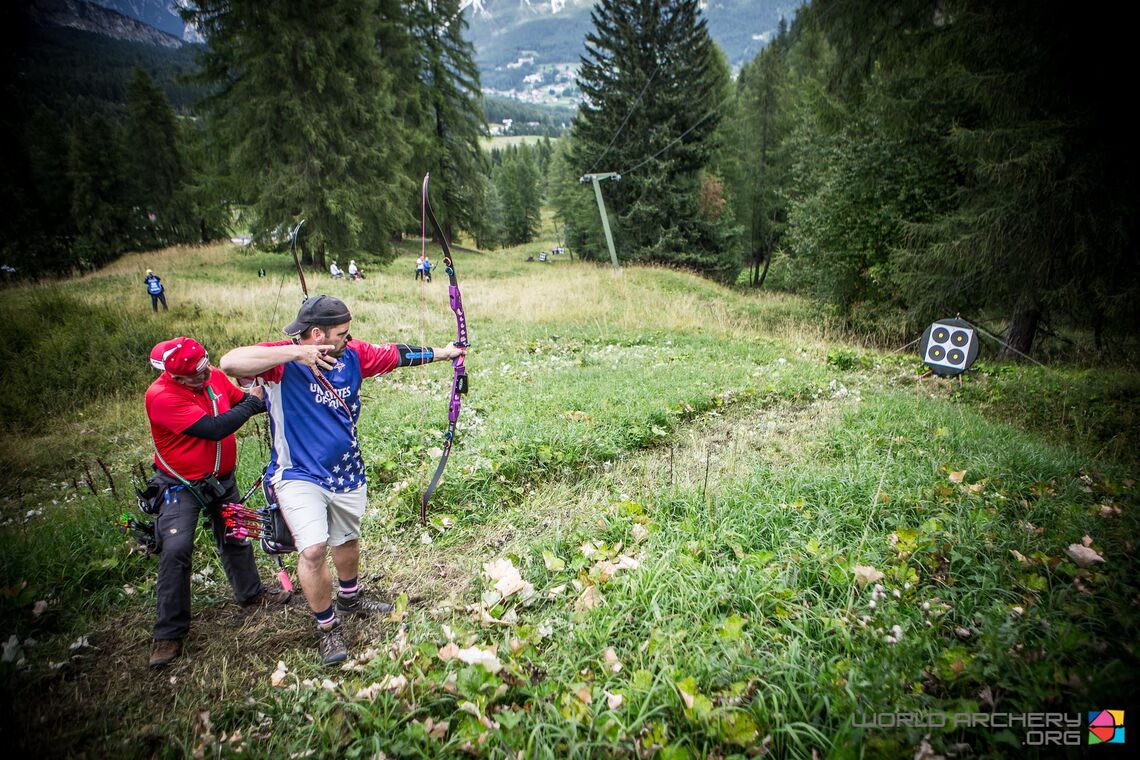
Field archery
Archers shoot at targets of varying distances set around a course.
Field archery is the discipline of shooting at stationary circular targets of different sizes set at varying distances, heights and angles around a course of natural terrain.
Archers shoot over distances of between 5 and 60 metres at yellow and black targets. The distances of the targets can be marked (known by the archer) or unmarked (unknown by the archer), making the ability to judge the range of the target valuable.
The additional skills required to succeed in field archery – including distance judging, shooting uphill and downhill, dealing with changing light conditions and challenging terrain – are collectively known as fieldcraft.
World Archery organises a field archery world championships, which is called the World Archery Field Championships, every two years. It was first held in 1969.
Field archery is the discipline used for the recurve and barebow competitions at the World Games.
Targets
International field archery competitions feature archers using recurve bows, compound bows and barebows.
Archers in all three categories shoot at a yellow and black target with six concentric scoring rings. The target scores six points for the inner ring and one point for the outer ring. The yellow rings score six and five, and the black rings score four, three, two and one points. Missing the target scores zero points. There are four different sizes of target, measuring 80, 60, 40 and 20 centimetres in diameter.
The targets are laid around a clearly signposted course so that archers, usually in groups of four, can safely shoot at one target before scoring, collecting their arrows and advancing to the next target. The shooting positions for each target are marked on the ground with pegs.
Each archer shoots three arrows at each target.
Recurve and compound archers shoot from red pegs over marked distances between 10 and 60 metres, and over unmarked distances between 10 and 55 metres.
Barebow archers shoot from blue pegs over marked distances between 5 and 50 metres, and over unmarked distances between 5 and 45 metres.
Competition format
International field archery competitions consist of individual, mixed team and team events.
A mixed team consists of two archers (one man and one woman) shooting with the same bowstyle. A team consists of three archers of the same gender, one from each of the different categories (recurve, compound and barebow).
There are three distinct phases to a competition.
The qualification phase consists of each archer shooting 24 marked and 24 unmarked targets. Archers are ranked by their total score for the individual event. These rankings then provide the seedings for the pool phase. The top two seeds skip the pool phase and automatically enter the matchplay semifinals.
The rankings for the mixed team and team events provided the seedings for the brackets. Seeds for the mixed team event are decided by ranking the highest scoring man and woman from one country. Seeds for the team event are decided by ranking the highest scoring three archers of the same gender, one from each category, from one country.
The pool phase only applies to the individual event.
Individual archers are divided into groups called pools. The lowest-seeded archer in each pool shoots a match against the next-lowest-seeded archer, with the loser of the match eliminated and the winner of the match advancing to face the next-lowest-seeded archer, and so on until only one archer remains in each pool. The pool winners shoot matches to decide the final two places in the matchplay semifinals.
The matchplay phase consists of archers, mixed teams and teams progressing through head-to-head brackets, one for each category, in which the winner advances and the loser is eliminated until a champion is crowned. All matches are decided on cumulative score.
Match formats
All matches in the discipline of field archery are decided using cumulative score.
The goal of a cumulative score match is to finish the match with the highest total score. A match consists of six targets and 18 arrows in the individual pool phase, four targets and 16 arrows for mixed team matches, and four targets and 12 arrows in all other cases. (The arrows are split equally between archers in mixed team and team matches.)
If a match is tied on total score after the regulation number of arrows, then the match is sent to a tiebreak.
Tiebreak formats
The tiebreak procedures for all competition categories are the same and take place on the last target or an independent target nominated by the judge.
In an individual match, each archer shoots one arrow. The archer whose arrow lands closest to the centre of the target wins the match.
(If the judge cannot decide whose arrow is closest, they may call for another shoot-off.)
In a mixed team or team match, each archer shoots one arrow. The mixed team or team with the highest total score wins the match.
If the mixed teams or teams are tied on score, then the mixed team or team whose arrow landed closest to the centre of the target wins the match. If those arrows are an identical distance from the centre, then the next arrows are compared (and again for teams).
(If the judge cannot differentiate between the mixed teams or teams after the last arrow, they may call for another shoot-off.)
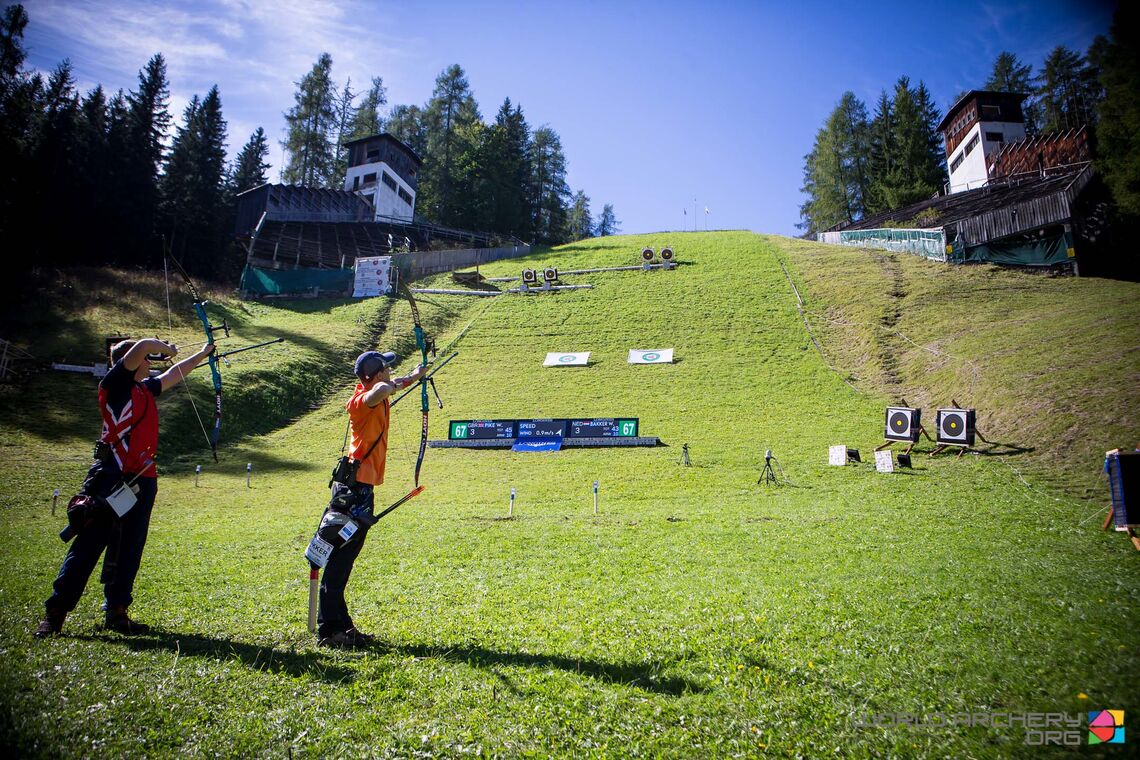
History and other formats
The first field archery world championships were held in Valley Forge, USA, in 1969 with competitions for recurve and barebow archers. This was the first time that barebow was identified as a separate category.
Compound was added to the programme of the World Archery Field Championships in 1990, making it the first international archery event to include the discipline. (It was later added to the programme of the World Archery Indoor Championships in 1991 and the World Archey Championships in 1995.)
Many decorated athletes in the discipline of target archery have also been successful field archers. Morgan Lundin, Michele Frangilli and Mike Schloesser have all won the target, indoor and field world championships.
Swedish barebow Erik Jonsson is the most decorated field archer of all time, having won five World Archery Field Championships in 1998, 2004, 2014, 2016 and 2018.
Alternative competition formats are included in the World Archery Rulebook, and there are many local variations. National competitions often consist of the qualification phase of an international event.
